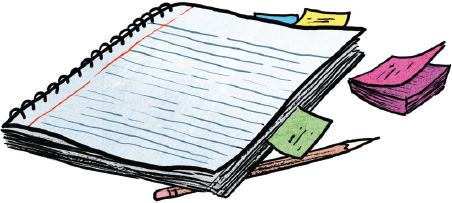
| 1 | The Top Twenty: A Quick Guide to Troubleshooting Your Writing |
Surface errors—grammar, punctuation, word choice, and other small-scale matters—don’t always disturb readers. Whether your instructor marks an error in any particular assignment will depend on personal judgments about how serious and distracting it is and about what you should be focusing on in the draft. In addition, not all surface errors are consistently viewed as errors: some of the patterns identified in the research for this book are considered errors by some instructors but as stylistic options by others. Such differing opinions don’t mean that there is no such thing as correctness in writing—only that correctness always depends on some context, on whether the choices a writer makes seem appropriate to readers.
Research for this book reveals a number of changes that have occurred in student writing over the past twenty-plus years. First, writing assignments in first-year composition classes now focus less on personal narrative and much more on research essays and argument. As a result, students are now writing longer essays than they did twenty years ago and working much more often with sources, both print and digital. Thus it’s no surprise that students today are struggling with the conventions for using and citing sources, a problem that did not show up in most earlier studies of student writing.
What else has changed? For starters, wrong-word errors are by far the most common errors among first-year student writers today. Twenty years ago, spelling errors were most common by a factor of more than three to one. The use of spell checkers has reduced the number of spelling errors in student writing—but spell checkers’ suggestions may also be responsible for some (or many) of the wrong words students are using.
All writers want to be considered competent and careful. You know that your readers judge you by your control of the conventions you have agreed to use, even if the conventions change from time to time. To help you in producing writing that is conventionally correct, you should become familiar with the twenty most common error patterns among U.S. college students today, listed here in order of frequency. A brief explanation and examples of each error are provided in the following sections, and each error pattern is cross-referenced to other places in this book where you can find more detailed information and additional examples.
The Top Twenty
AT A GLANCE
The Top Twenty
- Wrong word
- Missing comma after an introductory element
- Incomplete or missing documentation
- Vague pronoun reference
- Spelling (including homonyms)
- Mechanical error with a quotation
- Unnecessary comma
- Unnecessary or missing capitalization
- Missing word
- Faulty sentence structure
- Missing comma with a nonrestrictive element
- Unnecessary shift in verb tense
- Missing comma in a compound sentence
- Unnecessary or missing apostrophe (including its/it’s)
- Fused (run-on) sentence
- Comma splice
- Lack of pronoun-antecedent agreement
- Poorly integrated quotation
- Unnecessary or missing hyphen
- Sentence fragment
Taking a Writing Inventory
AT A GLANCE
Taking a Writing Inventory
One way to learn from your mistakes is to take a writing inventory. It can help you think critically and analytically about how to improve your writing skills.
- Collect two or three pieces of your writing to which either your instructor or other students have responded.
- Read through these writings, adding your own comments about their strengths and weaknesses. How do your comments compare with those of others?
- Group all the comments into three categories—broad content issues (use of evidence and sources, attention to purpose and audience, and overall impression), organization and presentation (overall and paragraph-level organization, sentence structure and style, and formatting), and surface errors (problems with spelling, grammar, punctuation, and mechanics).
- Make an inventory of your own strengths in each category.
- Study your errors. Mark every instructor and peer comment that suggests or calls for an improvement, and put all these comments in a list. Consult the relevant part of this book or speak with your instructor if you don’t understand a comment.
- Make a list of the top problem areas you need to work on. How can you make improvements? Then note at least two strengths that you can build on in your writing. Record your findings in a writing log that you can add to as the class proceeds.
Watch and respond to the video Correctness in context.
How would you define "correct" language in the context of your academic and formal writing?